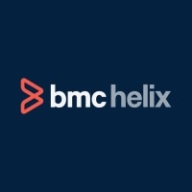

Splunk AppDynamics and BMC Helix Continuous Optimization compete in improving enterprise IT operations. Splunk AppDynamics benefits from advantages in pricing and support, while BMC Helix offers superior features that justify its cost.
Features: Splunk AppDynamics provides application performance monitoring, real-time business performance insights, and robust support. BMC Helix Continuous Optimization stands out with predictive analytics, extensive resource optimization, and comprehensive optimization features for environments needing complex resource management.
Ease of Deployment and Customer Service: Splunk AppDynamics offers an easy deployment process and reliable support, adaptable to various IT infrastructures. BMC Helix Continuous Optimization brings more complexity in deployment but compensates with exceptional customer service that assists in navigating its setup.
Pricing and ROI: Splunk AppDynamics is known for its lower initial cost and satisfactory ROI for businesses aiming for immediate visibility and performance. BMC Helix Continuous Optimization, with higher initial costs, provides significant long-term ROI through its resource management tools, offering extensive efficiency gains for companies focused on long-term benefits.
| Product | Market Share (%) |
|---|---|
| Splunk AppDynamics | 18.6% |
| BMC Helix Continuous Optimization | 0.6% |
| Other | 80.8% |

| Company Size | Count |
|---|---|
| Small Business | 55 |
| Midsize Enterprise | 36 |
| Large Enterprise | 188 |
BMC Helix Continuous Optimization is a comprehensive performance and capacity management solution designed to help enterprises optimize IT resources, enhancing operational efficiency while managing costs effectively.
It provides predictive analytics and modeling capabilities, allowing businesses to meet evolving demands seamlessly. By proactively identifying resource constraints and predicting future trends, BMC Helix Continuous Optimization assists organizations in aligning IT resources with business objectives. This strategic approach ensures optimized performance, resource allocation, and cost management with enhanced insights.
What are the key features of BMC Helix Continuous Optimization?
What benefits can be expected from BMC Helix Continuous Optimization?
BMC Helix Continuous Optimization is leveraged by industries like financial services, healthcare, and telecommunications to ensure resource efficiency. These sectors benefit from predictive modeling and capacity planning capabilities, enabling them to adapt to fast-changing conditions while maintaining optimal performance.
Splunk AppDynamics enhances application performance monitoring with advanced diagnostics and real-time insights, offering seamless end-to-end transaction tracking and infrastructure visibility.
AppDynamics provides critical tools for businesses to analyze application behavior and performance. Through innovative features like transaction snapshot analysis and adaptable dashboards, users can quickly identify and address issues, ensuring high levels of system uptime and efficiency. It is designed to support complex environments including Kubernetes and AWS, enhancing user experience by detecting performance issues early. Despite needing improvements in network monitoring and integration, it remains a robust option for tracking application health.
What are the key features of AppDynamics?In industries like financial services and e-commerce, AppDynamics facilitates performance tracking across distributed systems, optimizing infrastructure to meet consumer demands. It excels in environments needing precise transaction monitoring and is pivotal in delivering high value and satisfaction.
We monitor all IT Operations Analytics reviews to prevent fraudulent reviews and keep review quality high. We do not post reviews by company employees or direct competitors. We validate each review for authenticity via cross-reference with LinkedIn, and personal follow-up with the reviewer when necessary.